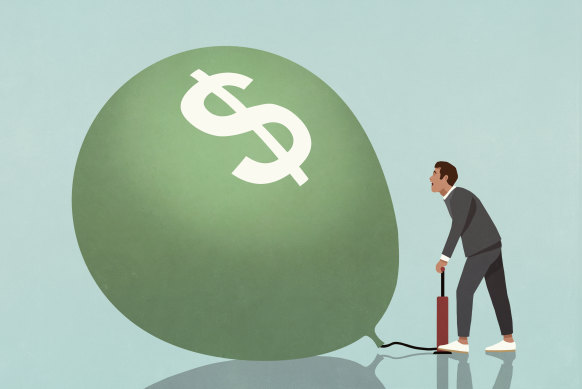Not retirement ready yet? Catch-up strategies for late-starters
Save articles for later
Add articles to your saved list and come back to them any time.
Let’s face it, life doesn’t always go as planned. In fact, more people than you might expect find themselves in their late 40s, 50s and even early 60s, and not having saved enough for retirement – yet! It might be because of unexpected financial setbacks or divorce, or simply because your priorities were elsewhere. If you’re feeling like you haven’t paid enough attention to your retirement planning, there is still time to play catch-up – for most people. Here’s how to get started:
Understand your current superannuation balance and how it is invested
If you’ve got this far in life, you will have likely paid compulsory superannuation contributions into at least one super fund. And you may not have paid a lot of attention to it until now. But an important step is to properly understand your current super balance, your account fees and the type of investment set up in the account. And if you have a number of funds, tidy that up.
Credit:
Many people don’t realise that the balanced or default account for your superannuation fund is only one of the investment options. Depending on where you are in life and how much risk you are prepared to take, you could consider stepping it up to “growth” for a few years to maximise your compounding in an attempt to increase your super balance fairly passively.
Most funds will offer you access to a financial adviser to discuss your risk appetite and intra-fund options, or if you want to consider switching, you might want to talk to an independent adviser.
Recut your budget and consider contributing more to superannuation
The next step is to closely examine how much you need to live on, and how much you could afford to save each week or month for retirement. And to do that, you should create a household budget and look through it for ways to save. You can download a budgeting template here.
Most people don’t realise the enormous power of time and compound investment, and how tucking away savings into their superannuation, leveraging the tax concessions, and leaving it there to compound for years is really how a great retirement savings plan works. It can be that simple.
Demolish your debt
Paying off your mortgage and any other personal debts you can before retiring can significantly improve your financial security during your retirement years. Without a mortgage payment, your monthly expenses are significantly reduced, which means you’ll need less income to maintain your desired lifestyle in retirement. And an added benefit is that once your mortgage is paid off, you can redirect the money you were using to pay it to other investment opportunities (or your superannuation).
Consider whether you can make extra concessional contributions
One strategy for late starters in retirement planning is to maximise concessional contributions to your superannuation fund, socking money away so it can compound over time with a good investment strategy. Concessional contributions of up to $27,500 can be made to super each year using before-tax funds, which can include employer contributions, salary sacrifice, or personal contributions that you claim as a tax deduction. By taking advantage of these contributions, you reduce your taxable income and boost your retirement savings. If you haven’t contributed up to the $27,500 limit over prior years, you can use “catch-up contributions” to leverage unused cap space from the prior five years.
Understand and look for opportunities to make non-concessional contributions
If you come into a cash windfall, you might want to consider how you can use non-concessional contributions to get it into your superannuation fund to accelerate your savings. Non-concessional contributions involve using after-tax income to contribute to your super. While they won’t provide immediate tax benefits, the money you contribute, once inside super, can grow tax-free. There are annual contribution limits of $110,000 on non-concessional contributions and a bring-forward rule of up to $330,000 over a three-year period that you might be able to access as long as you are under 75 years of age. There’s also a lifetime contributions cap and various rules you will need to understand in more detail.
Think about your downsizing opportunities
Finally, as you approach retirement, you might want to think about whether it is appropriate for you to downsize your home to free up money to fund your retirement. The Australian government offers a downsizing incentive for people aged 55 and over, which allows you to draw $300,000 per person or $600,000 per couple from the sale of a principal residence and put it into superannuation tax-free.
Better understand access to the age pension
It is not a topic most people want to discuss 10 to 15 years out from retirement, but there is plenty of merit in understanding how the age pension works as a part of your wider retirement planning. More than 50 per cent of Australians aged over 67 ]rely on the pension, so you would not be alone in it playing a role in your life. Many people even get quite strategic in their planning to ensure they can draw a part-pension.
You might be a late starter, but it is never too late to start.
Bec Wilson is author of How to Have an Epic Retirement, which is now available online and in all major booksellers. She writes a weekly email newsletter for pre- and post-retirees at epicretirement.net.
- Advice given in this article is general in nature and not intended to influence readers’ decisions about investing or financial products. They should always seek their own professional advice that takes into account their own personal circumstances before making any financial decisions.
For expert tips on how to save, invest and make the most of your money, delivered to your inbox every Sunday, sign up for our Real Money newsletter here.
Most Viewed in Money
From our partners
Source: Read Full Article


